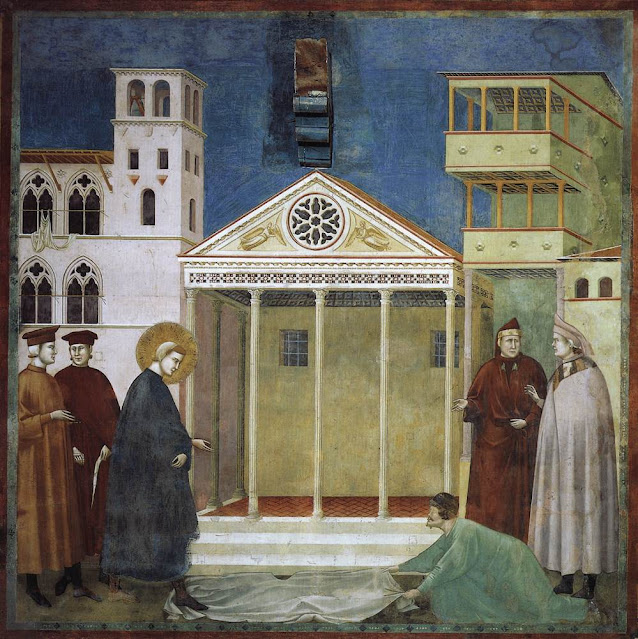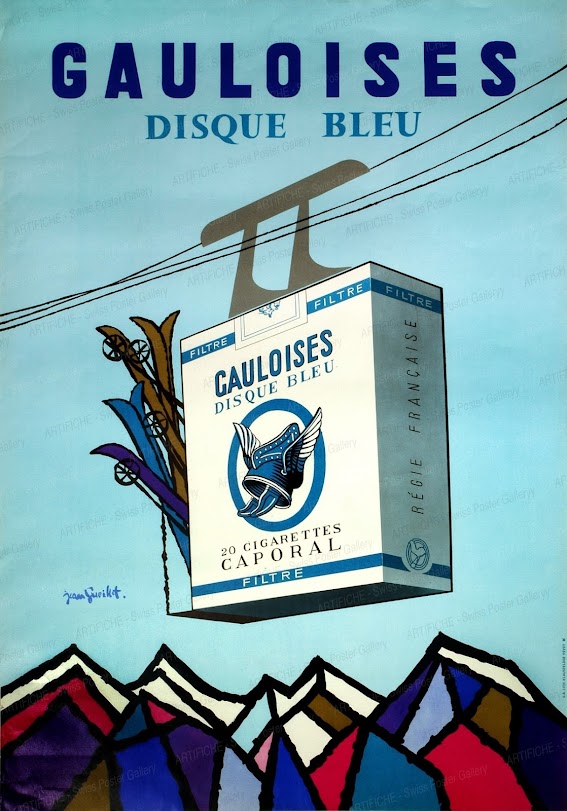Giotto di Bondone c1265-1337
An artist who played a decisive role in the development of Italian painting in his century and beyond (his works were studied and copied by masters of the stature of Masaccio and Michelangelo), Giotto was probably born in Florence c1265. According to the earlier sources, he was a disciple of Cimabue (c1240 – 1302). His earliest works, such as the painted crucifix in Santa Maria Novella and the Maestà formerly in San Giorgio alla Costa and now in the Museo Diocesano, both in Florence, and especially his biblical frescoes in the upper church of the basilica of San Francesco at Assisi, reveal the strong influence of the Roman school, both contemporary and classical. It seems reasonable to suppose, therefore, that the young Giotto, a well-established painter by the time he presumably executed the above mentioned paintings (1290 – 1295), had spent a period of formation or apprenticeship in Rome.
By the mid-1290s (although some scholars believe it to be somewhat earlier, and others later) he was commissioned to paint the cycle of stories of Saint Francis, again in the basilica at Assisi, and then to compose the great mosaic of the Navicella in the old Saint Peter’s at the Vatican. In c1300, Giotto returned once again to Assisi to fresco the Saint Nicholas Chapel, in the lower church of San Francesco. He then worked in the Franciscan church in Rimini, where a painted crucifix by his hand still remains. Giotto was then called to Padua, probably between 1303 and 1306, where he painted the famous cycle of frescoes in the Scrovegni Chapel, and also paintings, now much ruined, in the Basilica del Santo and in its adjoining chapter house. To this stylistic phase, in which the strong, realistic charge of the frescoes in Assisi is ennobled and enriched with elements of classical solemnity as well as a strong poetical vein, also belong the great Maestà now in the Uffizi, Florence, and the frescoes in the Magdalene Chapel in the basilica of San Francesco at Assisi, probably to be connected with a document that speaks of the artist’s presence in the Umbrian city just before January 1309. Presumably slightly later in date are the very famous but now barely legible frescoes in the Peruzzi Chapel in Santa Croce in Florence.
Toward the middle of the second decade, a change in the artist’s vision can be discerned. Though not abandoning the ideals of classical solemnity and grandeur, he now developed an interest in realistic details and began to enrich his scenes with secondary episodes, emphasising the elegance of posture and the eloquence of gesture of his figures. So sweeping were the changes brought by this development that many works of the period between c. 1315 and 1325, including the important mural cycle in the right transept and in the ceiling vaults of the lower church of San Francesco at Assisi and the Stefaneschi altar-piece for Saint Peter’s (now in the Pinacoteca Vaticana), although identified as the artist’s work by fourteenth-century sources, are instead denied to him and attributed to an anonymous assistant by several scholars. Much the same fate has befallen the Baroncelli polyptych in Santa Croce, a work signed by Giotto and probably executed in 1328, the year in which the artist began a long period of residence in Naples.
Of his Neapolitan works, only a few fragments of frescoes survive in the church of Santa Chiara, but there are reasons for thinking that the polyptych signed by the artist and now in the Pinacoteca Nazionale in Bologna was painted during this period. On his return to Florence in 1334, the artist was commissioned to design the campanile of the Duomo and its reliefs. He also painted the Bardi Chapel in Santa Croce and began to fresco the chapel of the Palazzo del Bargello. By 1335 – 1336 he was frescoing the chapel of the Castello di Galliera at Bologna and the palazzo of the Visconti in Milan. Giotto was already gravely ill when he returned to Florence. He died there in January 1337.
National Gallery of Art, Washington, DC
This is part 1 of a 6-part series on the works of Giotto:
 |
| 1290-1300 Crucifix tempera on wood 578 x 406 cm Santa Maria Novella, Florence |
 |
| 1295-1300 Madonna Enthroned with Child and Two Angels tempera on wood 180 x 90 cm Diocesan Museum, Santo Stefano al Ponte, Florence |
1297-99 The Legend of St Francis, Upper Church, San Francesco, Assisi:
 |
| Scenes Nos. 1-3 fresco |
 |
| Scenes Nos. 4-6 fresco |
 |
| Homage of a Simple Man (detail) fresco 270 x 230 cm |
 |
| St. Francis Giving his Mantle to a Poor Man fresco 270 x 230 cm |
 |
| Dream of the Palace fresco 270 x 230 cm |
 |
| Miracle of the Crucifix fresco 270 x 230 cm |
 |
| Renunciation of Worldly Goods fresco 270 x 230 cm |
 |
| Dream of Innocent III fresco 270 x 230 cm |
 |
| Confirmation of the Rule fresco 270 x 230 cm |
 |
| Vision of the Flaming Chariot fresco 270 x 230 cm |
 |
| Vision of the Thrones fresco 270 x 230 cm |
 |
| Exorcism of the Demons at Arezzo fresco 270 x 230 cm |
 |
| Exorcism of the Demons at Arezzo fresco 270 x 230 cm |
%20fresco%20270%20x%20230%20cm.jpg) |
| St Francis before the Sultan (Trial by Fire) fresco 270 x 230 cm |
 |
| Ecstasy of St Francis fresco 270 x 230 cm |
 |
| Institution of the Crib at Greccio fresco 270 x 230 cm |
 |
| Institution of the Crib at Greccio (detail) |
 |
| Miracle of Spring fresco 270 x 200 cm |
 |
| Miracle of Spring (detail) |
 |
| Sermon to the Birds fresco 270 x 200 cm |
 |
| Death of the Knight of Celano fresco 270 x 230 cm |
 |
| St Francis Preaching before Honorius III fresco 270 x 230 cm |
 |
| Apparition at Arles fresco 270 x 230 cm |
 |
| Stigmatisation of St Francis fresco 270 x 230 cm |
 |
| Death and Ascension of St Francis fresco 270 x 230 cm |
 |
| Apparition to Fra Agostino and to Bishop Guido of Arezzo fresco 270 x 230 cm |
 |
| Verification of the Stigmata fresco 270 x 230 |
 |
| Verification of the Stigmata (detail) |
 |
| Verification of the Stigmata detail |
 |
| St. Francis Mourned by St. Clare fresco 270 x 230 cm |
 |
| Canonisation of St Francis fresco 270 x 230 cm |
 |
| 1300 Stigmatisation of St. Francis tempera on wood panel 314 x 162 cm Musée du Louvre, Paris |
 |
| 1300-15 Crucifix tempera and gold on fir wood panel 468 x 375 cm Ognissanti, Florence |
 |
| 1300-15 Crucifix (detail) |
 |
| 1300-1325 Saint Francis of Assisi receiving the Stigmata by School of Giotto di Bondone tempera on panel 314 x 162 cm Louvre, Paris |
 |
| 1301-02 Badia Polyptych tempera on panel 91 x 334 cm Uffizi Gallery, Florence |
 |
| 1301-02 Badia Polyptych (detail) |
 |
| 1301-02 Badia Polyptych (detail) |





.jpg)





%202.jpg)







.jpg)
%201.jpg)
%20by%20unknown.jpg)
.jpg)
















.webp)
%20by%20unknown%201.jpg)
%20by%20unknown%202.jpg)
%20by%20unknown.webp)
.jpg)
